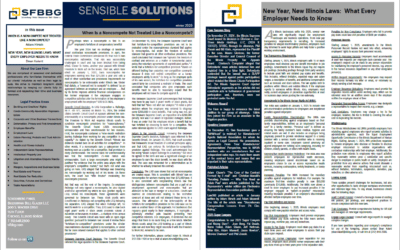The past four spring training columns have each covered the progress of a class-action lawsuit in which minor league players sought to obtain what Major League Baseball, supreme ruler of the minor leagues, was unwilling to provide: a living wage. Many minor leaguers earn less than $7,500 a year, some less than $3,000, but barring action by the Supreme Court, their suit appears concluded.
The 9th U.S. Circuit Court of Appeals ruled last June that baseball’s exemption from antitrust laws extends to the minor leagues, citing the Curt Flood Act of 1998 (for reference, see the 2015 and 2016 columns). No matter how anti-competitive baseball’s efforts to suppress minor league salaries are, the outdated antitrust exemption bestowed on baseball in 1922 by the Supreme Court now extends to the minor leagues.
Accordingly, this column now turns to other MLB litigation, and there’s plenty of it.
Fan litigation
John Loos of Schaumburg alleged in a Cook County Circuit Court action that the Chicago Cubs and MLB “willfully and wantonly” failed to protect him when they knew fans were increasingly getting struck by foul balls and failed to extend Wrigley Field’s netting. Loos was blinded in one eye by a foul ball while sitting on the first base line last season.
Illinois is one of only four states that follows the “baseball rule,” immunizing owners of parks who provide netting to an adequate number of seats, generally behind home plate. Fans sitting in other areas are viewed as assuming the risk of getting struck by a wayward ball or bat.
As Wrigley’s owner, the Cubs obtained a dismissal under this rule on March 7, but MLB remains a defendant.
Coming too late to protect Loos, baseball announced last month that all teams would extend their netting for the upcoming season at least to the dugouts. This change followed a young girl being struck at Yankee Stadium last September by third baseman Todd Frazier’s 105 mph foul ball.
Player litigation
Meanwhile, another Yankee is the plaintiff in a lawsuit brought against the White Sox. Outfielder Dustin Fowler made his Major League debut on a rainy night last June at Guaranteed Rate Field and was due to lead off in the top of the second inning.
Starting in right field in the bottom of the first, Fowler sprinted after Sox first baseman José Abreu’s careening line drive. The ball landed foul, but Fowler’s pursuit took him full speed into a metal electrical box that lacked padding. In the collision, Fowler’s right knee slammed into the wall, rupturing his patella tendon.
Fowler was carried off on a stretcher and transported to Rush Medical Center, where doctors performed season-ending surgery. The sympathetic Yankees promptly traded the disabled outfielder, still awaiting his first big league plate appearance, to Oakland, where he is rebounding this spring.
Fowler recently filed suit, asserting that as a result of the “negligent, grossly negligent, reckless, willful and wanton conduct of the” Sox and the Illinois Sports Facilities Authority, owner of Guaranteed Rate Field, he suffered “severe and permanent” injuries.
While on baseball’s disabled list, Fowler was paid his salary, earned service time and received full health-care coverage. His suit, rare for any pro athlete, seeks to collect for his medical expenses and pain and suffering, and for the harm caused to his budding MLB career.
Traditionally, the risk of injury by professional athletes has been part of the game. Legions of colorful ballplayers took their licks, merely vowing to return.
Phillies center fielder Lenny Dykstra earned the nickname “Nails” for his full-tilt approach to the game, and was no stranger to civil or criminal court (ultimately sentenced to prison terms for bankruptcy fraud and grand theft auto). Yet, when Nails suffered a season-ending collarbone fracture making a memorable running catch into the unpadded wall at Cincinnati’s Riverfront Stadium in 1991, no suit against the Reds followed.
Nineteen-year-old rookie Mickey Mantle famously chased after Willie Mays’ fly ball during Game 2 of the 1951 World Series, catching a spike from his cleat in a rubber drain that permeated Yankee Stadium’s right field grass. After a series of surgeries, Mantle’s knee would never be the same, but no lawsuit followed.
In one of baseball’s best-known plays, Pete Rose barreled over Indians catcher Ray Fosse in the 12th inning of the 1970 All-Star Game, scoring the winning run and breaking Fosse’s shoulder, which remains painful to this day.
It wasn’t until after Scott Cousins of the Marlins similarly crashed into Giants catcher Buster Posey 41 years later, breaking Posey’s leg and ending his season, that baseball changed its rules to limit home plate collisions.
Neither Fosse nor Posey sued.
Perhaps Fowler’s case is different due to the allegedly negligent placement of the electrical box; the White Sox, and no doubt ballpark design experts, will surely probe that distinction. Yet, as unfortunate as it is to see a ballplayer hurt before his career ever starts, suing the team that enables the sport comprises a worrisome sign of the times.
Umpire litigation
Elsewhere, the game was sued by a 24-year umpire who believes a grudge carried by MLB’s chief baseball officer from his Hall of Fame managerial days has kept him from being named as a crew chief or working World Series games.
A 2001 call made by ump Angel Hernandez led Yankees skipper Joe Torre to tell reporters that Hernandez “just wanted to be noticed over there.” His complaint, filed in 2017, alleges that his career advancement suffered since Torre joined baseball’s front office in 2011, maintaining this view of him.
The Cuban-born Hernandez, whom Sports Illustrated ranked as the third-worst umpire in 2006 and 2011, also filed two discrimination charges with the Equal Employment Opportunity Commission.
Logo litigation
While the Cleveland Indians agreed to discontinue use of their longtime Chief Wahoo logo for the 2019 season, the decision came too late to head off legal action. Following a 2016 game in Toronto, a Native American activist sued the Indians and MLB seeking to end use of the team name and logo.
That suit was dismissed, but the Ontario Human Rights Tribunal ruled last May that a separate case contending the Indians name and Chief Wahoo logo are discriminatory can continue.
Hope springs eternal
Notwithstanding baseball’s magnet-like attraction of litigation, buoyant storylines abound in 2018 (and every season). Dustin Fowler, now 23 and still a rookie, will get a second chance to have his first big league at-bat. On the other end of the spectrum, the ageless Ichiro Suzuki will begin his 27th season back where it all began for him in Seattle.
The Cubs broke their 108-year title drought in 2016 against the Indians, current holders of the longest drought, and the Astros won their first-ever World Series last year. Cleveland, which last won a Series 69 seasons ago, is on deck after finishing 2017 with the best record in the American League.
Meanwhile, MLB revenue exceeded $10 billion for the first time in 2017 and set a record for the 15th straight year.
Although owners refuse to use this haul to raise minor league salaries to the minimum wage, at least fans can take comfort knowing the abundant litigation surrounding the game poses no real threat to its sustainability.
To view this article as published in the Chicago Daily Law Bulletin, click here.



